Suicide is the second leading cause of death among youth age 15-24. This age group is a time of changes between school, social groups, and learned responsibilities which can become overwhelming for many youth. One out of every fifteen high school students reportedly attempt suicide each year. Suicidal ideation for youth is even higher, with 17% of high schoolers reporting suicidal ideation within the past year.
Suicide risk factors for youth include existing mental illness, family dysfunction, trauma, and environmental factors. There are ways to spot signs of suicidal thoughts in young people. Warning signs of suicidal ideation or intent include talking about wanting to die, social withdrawal, mood swings, increase use of drugs and alcohol, expressed feelings of hopelessness, risky behavior, and changes to normal routines such as eating or sleeping too much or too little.
It is important to speak up if you see the youth in your life or individuals you serve showing warning signs of suicide. The only way to know for sure is to ask directly. For example, NAMI suggests using the language of, “Are you thinking about suicide?” instead of vague questions such as “Do you want to hurt yourself?”
Other forms of suicide prevention, which can be used for youth, include creating a safety plan to help navigate difficult moments and remind the individual of resources available, remove lethal means from the home, and refrain from judgment in conversations about suicide.
We can all play a part in reducing suicide. If you or someone you know is in crisis text ‘HOME’ to 741-741 or call 800-273-8255.
References:
- 1.CDC, 2011.
- Eaton et al., 2010.
- SAMHSA, 2020.
- NASP, 2015.
- 5. Mayo Clinic, 2021.
- 6. NAMI, 2019.








